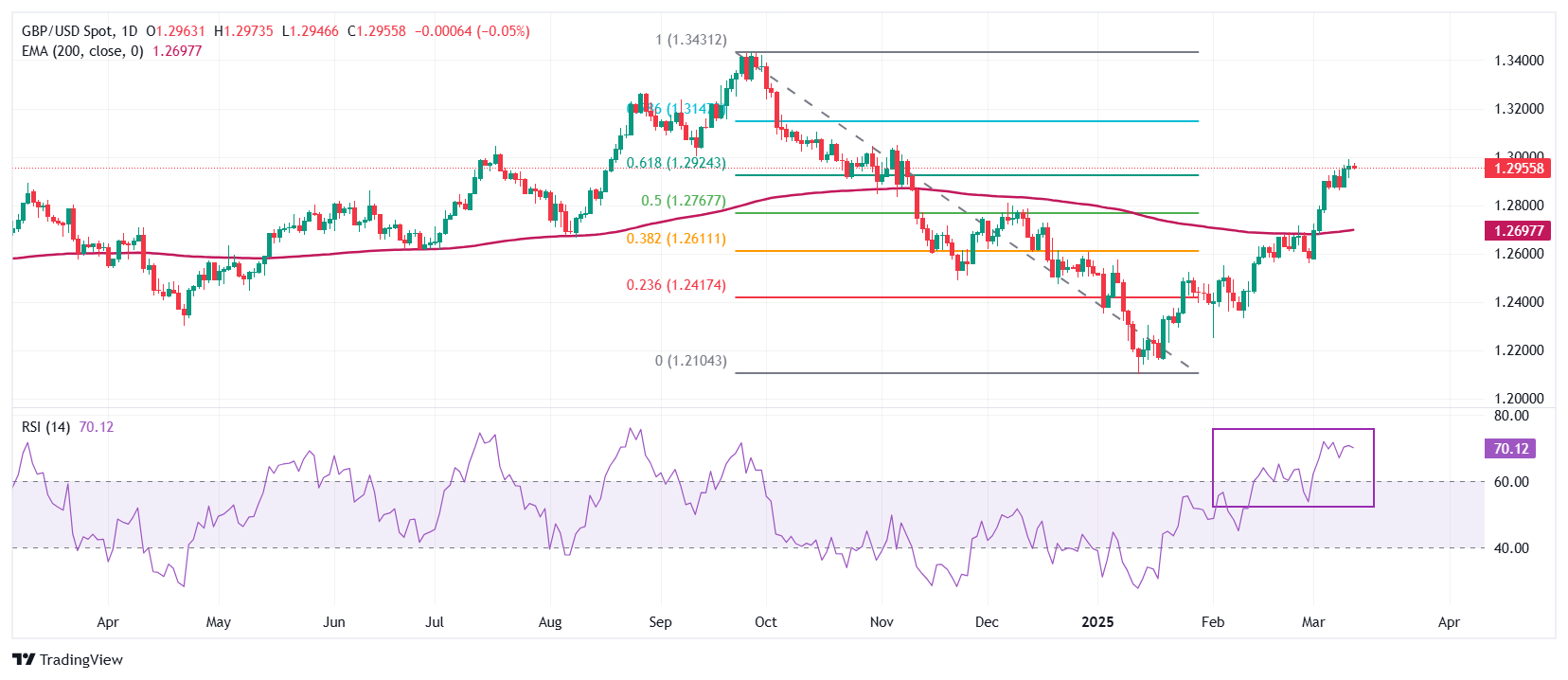The Pound Sterling (GBP) trades sideways around 1.2950 against the US Dollar (USD) on Thursday, consolidating after hitting a fresh four-month high near 1.2990 the previous day. The GBP/USD pair stabilizes as the US Dollar regains some ground following a two-week decline, while investors assess the impact of President Donald Trump’s tariff policies on inflation and economic growth. The US Dollar Index (DXY) edges up to 103.65, slightly above Tuesday’s four-month low of 103.20.
On Wednesday, President Trump threatened to impose retaliatory tariffs on the European Union (EU) after the bloc announced plans to introduce counter-tariffs on $26 billion worth of US goods. This follows Trump’s global 25% tariff on steel and aluminum imports, which officially took effect.
Concerns over a potential EU-US trade war have provided temporary support for the US Dollar. However, weaker-than-expected US Consumer Price Index (CPI) data for February is expected to cap gains. The CPI report showed headline and core inflation slowed to 2.8% and 3.1%, respectively, at a faster pace than anticipated, reinforcing expectations of a dovish Federal Reserve (Fed).
Investors now turn their attention to the US Producer Price Index (PPI) data for February, set for release at 12:30 GMT. Economists anticipate a 3.3% year-over-year increase in headline PPI, down from 3.5% in January, while core PPI is expected to remain steady at 3.6%.
Daily Market Movers: Pound Sterling Trades Cautiously as Sentiment Wavers
- The Pound Sterling trades cautiously as market sentiment weakens amid concerns over Donald Trump’s tariff policies, which have dampened demand for risk-sensitive assets. Investors fear that Trump’s "America First" approach could fuel inflation and slow global economic growth, increasing demand for safe-haven assets.
- Domestically, market participants await the United Kingdom’s (UK) monthly Gross Domestic Product (GDP) and factory data for January, set for release on Friday. The UK GDP report is particularly significant, as Bank of England (BoE) policymakers have expressed concerns about the country’s economic outlook.
- During its February policy meeting, the BoE revised its GDP growth forecast for the year down to 0.75%, halving its previous estimate of 1.5% from November. Additionally, BoE Monetary Policy Committee (MPC) member Catherine Mann supported an aggressive 50 basis-point (bps) rate cut due to concerns over economic growth.
- The UK economy is projected to have expanded by a modest 0.1% in January, down from 0.4% growth in December, while factory output is expected to show a decline.
- Looking ahead, the Bank of England’s upcoming monetary policy decision next week will be a key event for the British currency. The BoE is expected to keep interest rates steady at 4.5%, following its cautious approach to monetary easing. In February, the central bank cut rates by 25 bps, signaling a gradual path forward.
Technical Analysis: Pound Sterling Holds Firm Above 200-Day EMA
![]()
The Pound Sterling remains strong near the psychological resistance level of 1.3000 against the US Dollar on Thursday, hovering around a four-month high. The long-term outlook for GBP/USD remains bullish as the pair continues to trade above the 200-day Exponential Moving Average (EMA), currently positioned at 1.2697.
The 14-day Relative Strength Index (RSI) remains above 60.00, signaling strong bullish momentum.
On the downside, key support levels include the 50% Fibonacci retracement at 1.2767 and the 38.2% Fibonacci retracement at 1.2608. To the upside, the October 15 high of 1.3100 serves as a critical resistance level for further gains.






